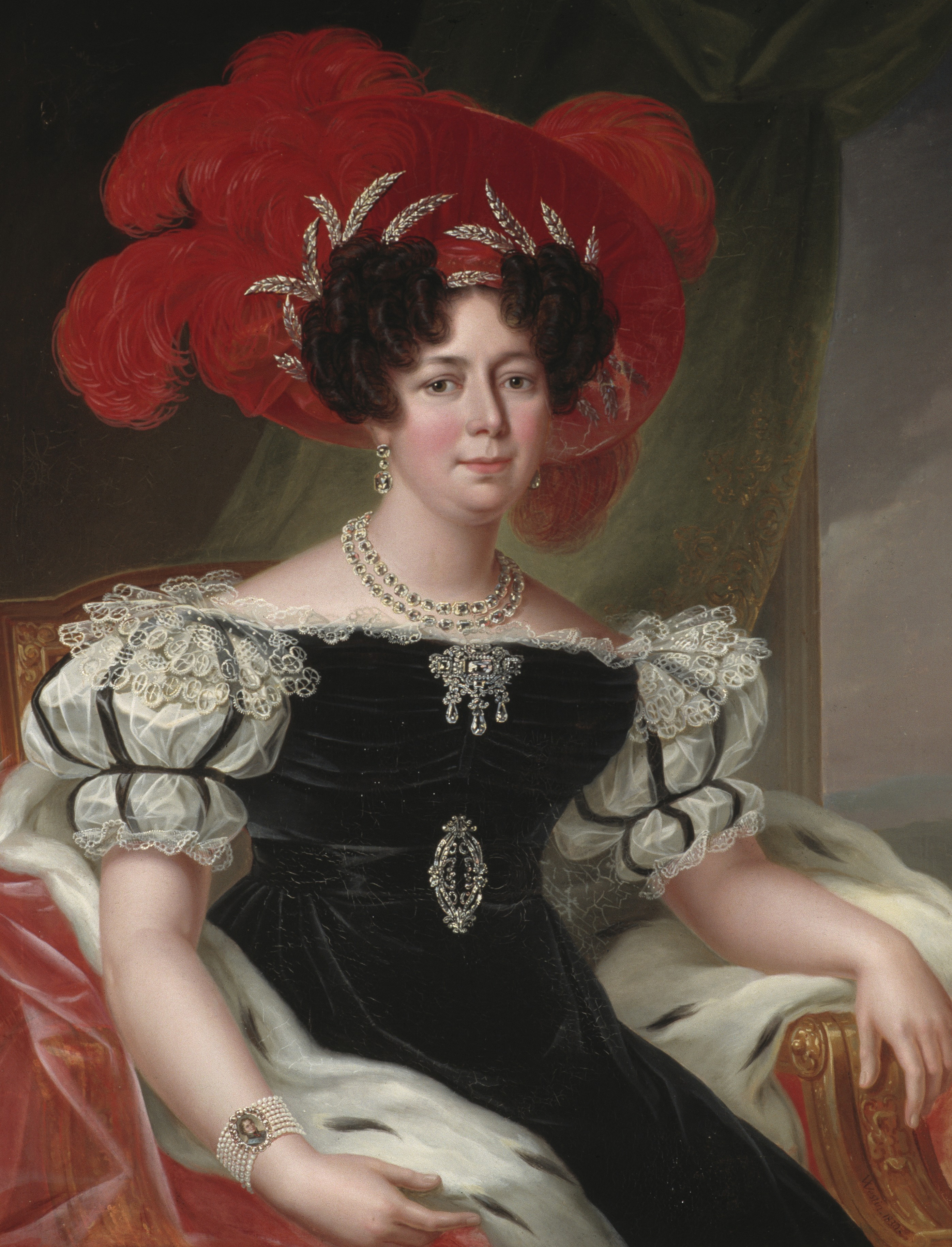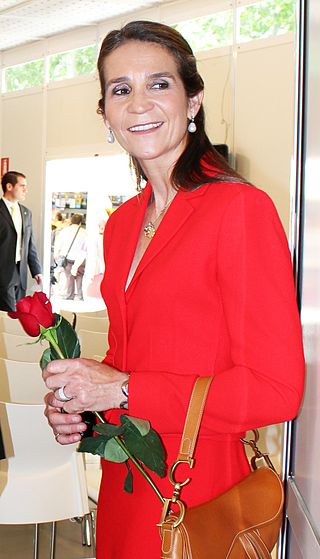© Unofficial Royalty 2023

Désirée Clary, Queen Desideria of Sweden; Credit – Wikipedia
December 17, 1732 – Death of Prince Josef Johann Adam of Liechtenstein in Valtice, Kingdom of Bohemia, now in the Czech Republic; buried in the Old Crypt at Chuch of the Nativity of the Virgin Mary in Vranov, Moravia, now in the Czech Republic.
Josef Johann Adam became the reigning Prince of Liechtenstein upon the death of his father Anton Florian, Prince of Liechtenstein on October 11, 1721. He married four times and had a total of eight children but only two children, including his successor Johann Nepomuk Karl, Prince of Liechtenstein, survived childhood. Josef Johann Adam died, aged 42, on December 17, 1732.
Unofficial Royalty: Prince Josef Johann Adam of Liechtenstein
December 17, 1734 – Birth of Maria I, Queen of Portugal at Ribeira Palace in Lisbon, Portugal
Full name: Maria Francisca Isabel Josefa Antonia Gertrudes Rita Joana
The first of the two Queen Regnants of Portugal, Maria was the eldest of the four children and the eldest of the four daughters of José I, King of Portugal. It was inevitable that Maria would become the reigning Queen of Portugal. However, since female succession to the throne of Portugal had never happened before, her father decided that Maria would marry his younger brother Infante Pedro of Portugal, the first male in the line of succession. In 1760, 25-year-old Maria married her 42-year-old paternal uncle Pedro. Maria and Pedro had six children. Maria is considered to have been a good ruler in the period before her mental instability, which was first noticed in 1786 when she had to be carried back to her apartments in a state of delirium. Her mental instability continued to worsen. The deaths of her husband Pedro in 1786, her eldest son and heir José in 1788, and her confessor Inácio de São Caetano, Archbishop of Salonica in 1788 may have caused major depressive disorder. Her second son João, now heir to the throne then served as prince regent.
Unofficial Royalty: Maria I, Queen of Portugal
December 17, 1800 – Birth of Bernhard II, Duke of Saxe-Meiningen in Meiningen, Duchy of Saxe-Meiningen, now in Thuringia, Germany
Full name: Bernhard Erich Freund
Bernhard was the only son of Georg I, Duke of Saxe-Meiningen and the younger brother of Adelaide of Saxe-Meiningen who married King William IV of the United Kingdom. In 1803, three-year-old Bernhard became Duke of Saxe-Meiningen upon the death of his father. In 1825, Bernhard married Princess Marie Friederike of Hesse-Kassel and the couple had two children. Although he had earlier aligned himself with Prussia, in the mid-1860s, Bernhard instead sided with Austria during the Austro-Prussian War of 1866. Following Austria’s defeat, the Prussians forced Bernhard to abdicate on September 20, 1866, in favor of his son, Georg II. Now the former Duke, Bernhard took up residence at the Great Palace in Meiningen, previously built as a dower home for his mother. He died there at the age of 81.
Unofficial Royalty: Bernhard II, Duke of Saxe-Meiningen
December 17, 1802 – Birth of Archduke Franz Karl of Austria in Vienna, Austria
Archduke Franz Karl was the son of Emperor Franz I of Austria, the father of Emperor Franz Joseph I of Austria and Emperor Maximilian I of Mexico, the grandfather of Archduke Franz Ferdinand of Austria whose assassination led to World War I, and the great-grandfather of Karl I, the last Emperor of Austria. In 1824, Franz Karl married 1824, Franz Karl married Princess Sophie of Bavaria, daughter of King Maximilian I Joseph of Bavaria and the couple had five children. Franz Karl had no ambitions of power and had never been interested in politics, the exact opposite of his wife Sophie. Sophie’s biggest ambition was to place her oldest son Franz Joseph on the Austrian throne. During the Revolutions of 1848, she persuaded her husband to give up his rights to the throne in favor of their son Franz Joseph, and on December 2, 1848, Franz Karl’s mentally incapacitated brother Emperor Ferdinand abdicated the throne in favor of his 18-year-old nephew Franz Joseph.
Full name: Franz Karl Joseph
Unofficial Royalty: Archduke Franz Karl of Austria
December 17, 1847 – Death of Marie Louise of Austria, Empress of France, second wife of Napoléon Bonaparte, at Parma, Duchy of Parma, now in Italy; buried at the Imperial Crypt in the Kapuzinerkirche in Vienna, Austria
Archduchess Maria Ludovica of Austria was the second wife of Napoleon I, Emperor of the French and later Duchess of Parma, Piacenza, and Guastalla in her own right. Because his wife Josephine had not provided him with an heir, French Emperor Napoleon was searching for a new bride who could bear him an heir and set his sights on the leading royal families of Europe. After Napoleon divorced his first wife, Maria Ludovica married him married in 1810, became Empress of the French and Queen of Italy, and took the French version of her name, Marie Louise. The couple did have one child, a son, who died at the age of 23. After Napoleon’s final defeat at the Battle of Waterloo and his exile to Saint Helena in 1815, Marie Louise had no further contact with him. Marie Louise married two more times and had three children with her second husband. As Duchess of Parma, Marie Louise supported many causes, with much of her efforts going toward improving medical care and treatment. She established a childbirth hospital and a training school for nurses, as well as a hospital for those with mental illness. In early December 1847, Maria Louise fell ill with pleurisy and her condition quickly worsened. She died at the age of 56.
Unofficial Royalty: Marie Louise of Austria, Empress of France
December 17, 1860 – Death of Désirée Clary, Queen Desideria of Sweden, wife of King Carl XIV Johan of Sweden, at the Royal Palace of Stockholm in Sweden; buried at Riddarholm Church in Stockholm, Sweden
Désirée was the youngest of the nine children of François Clary, a wealthy French merchant. Through Désirée and her sister Julie, their parents are the ancestors of the royal families of Belgium, Denmark, Luxembourg, Norway, and Sweden. Désirée became engaged to Napoleon Bonaparte in April 1795, but Napoleon soon became involved with Joséphine de Beauharnais and the engagement ended in September 1795. In 1798, she married Jean Baptiste Bernadotte, a noted French general and future King of Sweden and Norway. They had one son, born Joseph François Oscar Bernadotte, later King Oscar I of Sweden and Norway. In August 1810, Désirée’s husband was elected Crown Prince of Sweden and Norway to succeed the childless King Carl XIII of Sweden and Norway. Not wanting to leave Paris, Désirée did not initially accompany her husband to Sweden. When she eventually did go to Sweden, she did not like it at all and returned to Paris. In 1818, King Carl XIII of Sweden died, and Désirée’s husband ascended the thrones of Sweden and Norway as King Carl XIV Johan. However, Désirée, now known as Queen Desideria, would not return to Sweden until 1823. Although she planned to make just a temporary visit, Désirée would instead remain in Sweden for the rest of her life and died there at the age of 83.
Unofficial Royalty: Désirée Clary, Queen Desideria of Sweden
December 17, 1887 – Birth of Hermine Reuss of Greiz, (titular) German Empress, Queen of Prussia, second wife of Wilhelm II, former German Emperor and King of Prussia, in Greiz, Principality of Reuss-Greiz, German Empire, now in Thuringia, Germany
Hermine was a widow with five children when one of Hermine’s sons sent birthday wishes to Wilhelm II, formerly German Emperor, living in exile at Huis Doorn in Doorn, the Netherlands, who then invited the boy and his mother to Doorn. Wilhelm found Hermine very attractive and greatly enjoyed her company. Having both been recently widowed, the two had much in common. Wilhelm was determined to marry Hermine despite objections from his children. 63-year-old Wilhelm and 34-year-old Hermine married on November 5, 1922, in Doorn. Although Wilhelm had abdicated, he continued to use his royal styles and titles and therefore Hermine was styled Her Imperial Majesty The German Empress, Queen of Prussia. Hermine returned to Germany after Wilhelm’s death in 1941. After World War II, Hermine was held under house arrest at Frankfurt an der Oder in the Soviet Zone of Germany. She died at Paulinenhof, a Soviet internment camp near Brandenburg, Germany. She was buried at the Temple of Antiquities in Potsdam, Germany where Wilhelm’s first wife, Augusta Victoria of Schleswig-Holstein, and several other family members are also buried.
Unofficial Royalty: Hermine Reuss of Greiz, German Empress, Queen of Prussia
December 17, 1890 – Birth of Prince Joachim of Prussia, son of Wilhelm II, German Emperor, in Potsdam, Kingdom of Prussia, German Empire, now in Brandenburg, Germany
Full name: Joachim Franz Humbert
In 1916, Joachim married Princess Marie-Auguste of Anhalt and the couple had one son. After World War I and the fall of the German Empire, Joachim and Marie-Auguste divorced. Prince Joachim struggled to accept his status as a commoner and became greatly depressed. On the evening of July 18, 1920, he shot himself with a revolver at Villa Leignitz in Sanssouci Park in Potsdam, Germany. He was found by his elder brother August Wilhelm and taken to the Saint Joseph Hospital in Potsdam, where he died the following day.
Unofficial Royalty: Prince Joachim of Prussia
December 17, 1909 – Death of King Leopold II of the Belgians at Laeken, Belgium; buried at Royal Vault at the Church of Our Lady in Laeken, Brussels, Belgium
Leopold II was the second-born but first surviving child of King Leopold I of the Belgians. His father was formerly Prince Leopold of Saxe-Coburg-Saalfeld, uncle of both Queen Victoria and her husband Prince Albert of Saxe-Coburg and Gotha and so Leopold II was the first cousin of both Victoria and Albert. In 1853, he married Marie Henriette of Austria. They had three daughters and one son who died young. The marriage was not a happy one, and the couple lived mostly separate lives. After the death of their only son, Leopold and Marie Henriette tried to have another son, but the result was another daughter Clémentine. The couple completely separated after the birth of Clémentine. Leopold II was the second monarch of Belgium and is known for his exploitation of the Congo Free State for his personal gain and the horrendous atrocities committed against the native people. When Leopold II died at the age of 74, he was so unpopular with the Belgian people that his funeral procession was booed.
Unofficial Royalty: King Leopold II of the Belgians
December 17, 2007 – Birth of James Mountbatten-Windsor, Earl of Wessex, son of Prince Edward, Duke of Edinburgh, at Frimley Park Hospital in Surrey, England
Full name: James Alexander Philip Theo
As the eldest son of a Duke, James uses his father’s subsidiary title, Earl of Wessex. Under the terms of King George V’s Letters Patent of 1917, as grandchildren of the sovereign in the male line, they are Prince and Princess of the United Kingdom, with the style of Royal Highness. However, at the time of Edward and Sophie’s marriage, a press release was issued from Buckingham Palace. Along with announcing Prince Edward’s new title as Earl of Wessex, it stated that Queen Elizabeth II, with the agreement of Edward and Sophie, had decided that any children born to them should not be given the style of Royal Highness, but instead be given courtesy titles as children of a peer. In 2023, when his father was granted the title Duke of Edinburgh, James began to use his father’s secondary title Earl of Wessex.
Unofficial Royalty: James Mountbatten-Windsor, Earl of Wessex
This article is the intellectual property of Unofficial Royalty and is NOT TO BE COPIED, EDITED, OR POSTED IN ANY FORM ON ANOTHER WEBSITE under any circumstances. It is permissible to use a link that directs to Unofficial Royalty.
















